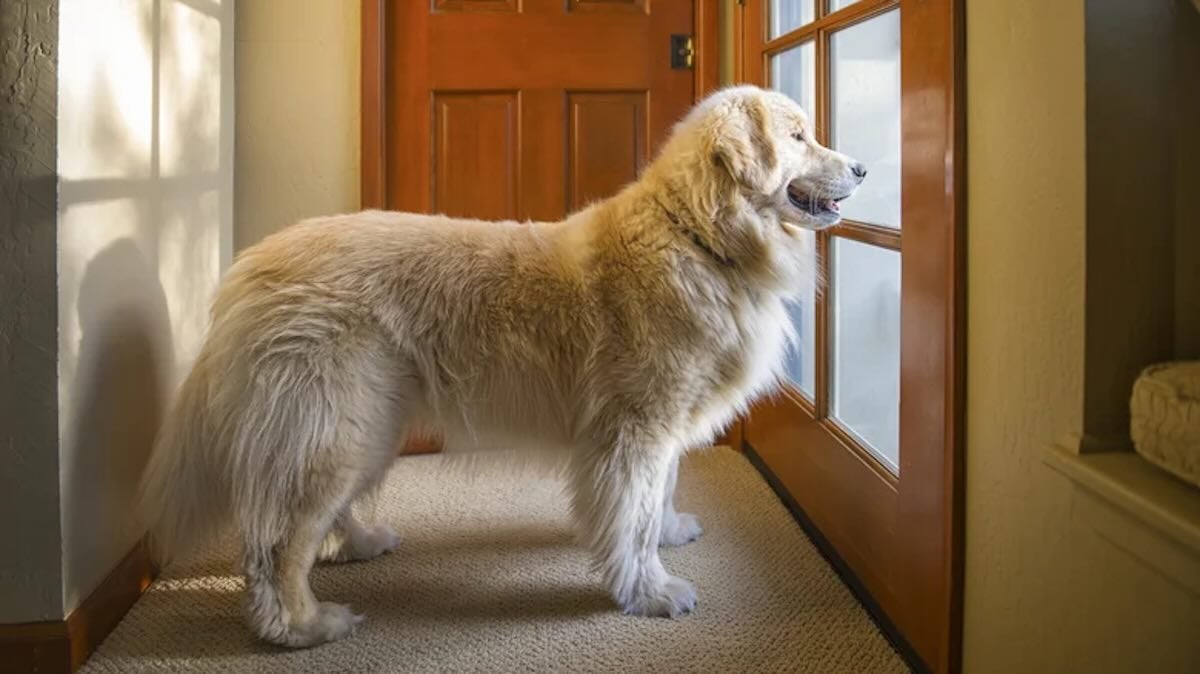A brief, gentle farewell touch can measurably decrease anxiety in animals remaining at residence. Based on findings from scholars at Pisa and Perugia Universities in Italy, providing your canine companion tender interaction just before departing reduces biological stress indicators and results in more peaceful, relaxed solitary periods. During a limited, structured experiment with household companions, those receiving pre-exit stroking demonstrated reduced cardiac rates and stress hormone concentrations compared to occasions without contact. The conclusion remains straightforward: a momentary loving gesture assists numerous creatures in managing your departure with greater composure.
Why a pre-departure routine helps anxious pets
Dogs form strong attachment bonds with their caregivers, so the moment a door closes can trigger distress. Typical signs include pacing, vocalizing, or scanning windows and doors. The Italian team set out to test whether a low-effort, positive ritual—calm petting right before leaving—could soften that stress response. They observed ten household dogs, aged 1 to 11 years, that did not have diagnosed attachment disorders, and compared behavior and physiology across two scenarios: being petted before separation and receiving no contact before separation.
By framing departure as a predictable, soothing moment, the ritual appears to act as an emotional buffer. It provides social reassurance, slows arousal, and gives the animal a clear cue that quiet time is about to begin. That combination is why a simple habit can change how the first minutes alone unfold.
How the calm-goodbye ritual works inside the body
Anxiety manifests through physical responses alongside behavioral changes, and this research monitored both aspects. When canines received stroking before owners departed, their typical cardiac rhythm throughout isolation remained within reduced ranges—approximately 80–100 pulses per minute—contrasted with 120–140 pulses per minute when no contact happened. Saliva cortisol, a commonly utilized tension indicator, revealed identical patterns: roughly 1.5–2.5 ng/mL with contact versus 3.0–4.0 ng/mL without interaction.
Per the investigators, this variation suggests genuine physiological modification, not merely calm appearance. Reduced activation likewise helps minimize attention-demanding actions that might develop into vocalization or damaging gnawing, particularly during initial moments following your exit.
How a brief dog petting routine changes stress signals
Light, unhurried strokes and a neutral voice signal safety. That tactile reassurance engages social touch pathways linked to calming effects, helping the autonomic nervous system tilt toward rest rather than vigilance. Because the contact happens right before the door closes, the comfort carries into the first minutes of alone time, when stress peaks for many pets.
Turning science into everyday practice
You don’t need elaborate steps to make this work. What counts is the caliber of the engagement: deliberate motions, gentle tone, and a reliable pattern you maintain. Combine the stroking with calming signals—positioning a toy on bedding, reducing environmental stimuli, or directing the creature toward a preferred resting area—making the ritual become a steady changeover.
Behavioral modification also applies effectively here: while you peacefully touch, offer something the canine appreciates (such as a secure extended-duration treat), making your departure forecast positive experiences rather than unpredictability. This small shift in meaning can reduce scanning and door-fixation, which often feed anxious spirals. Over time, the ritual’s consistency teaches that departures are normal and manageable, not emergencies.
Quick checklist for a smoother departure
- Keep movements slow and voice gentle to avoid over-arousal.
- Use a consistent spot (bed, mat, crate) to anchor the routine.
- Offer a safe, engaging item right after petting to support settling.
- Avoid long, emotional goodbyes that add excitement or worry.
What the numbers say—and what they don’t
The physiological differences reported by the Italian team are clear: lower heart rate (about 80–100 bpm with petting vs. 120–140 bpm without) and lower salivary cortisol (approximately 1.5–2.5 ng/mL vs. 3.0–4.0 ng/mL). Those figures align with calmer outward behavior during the separation period.
At the same time, the authors note scope limits. The sample was small (ten pets) and did not include dogs with diagnosed attachment issues or severe separation anxiety. That means results speak most directly to typical household scenarios rather than clinical cases.
For animals already on a treatment plan, pre-departure petting can complement, not replace, guidance from a qualified professional. Still, within everyday homes, the findings point to a reliable, low-cost lever you can pull: reshape the last moments before the door closes to set a calmer tone for what follows.
What this means for everyday training
Think of the ritual as part of environmental management. It stacks the deck in favor of rest, which supports learning. When the home environment consistently predicts calm after you leave, a dog is likelier to nap, chew, or watch quietly rather than rehearse worry. Combine the goodbye stroke with routine timing and simple enrichment, and you build a pattern that’s easier for pets to follow.
A calmer goodbye you can start today
If your schedule allows only one change, make it this one: pause, breathe, and add a few seconds of calm touch before you step out. Pair that moment with something your pet enjoys, then leave without fanfare. A relaxed departure lowers arousal, reduces the odds of problem behavior, and supports better rest. It’s a small, durable habit with outsized value for your companion—and a practical way to help your dog feel secure when home alone.
